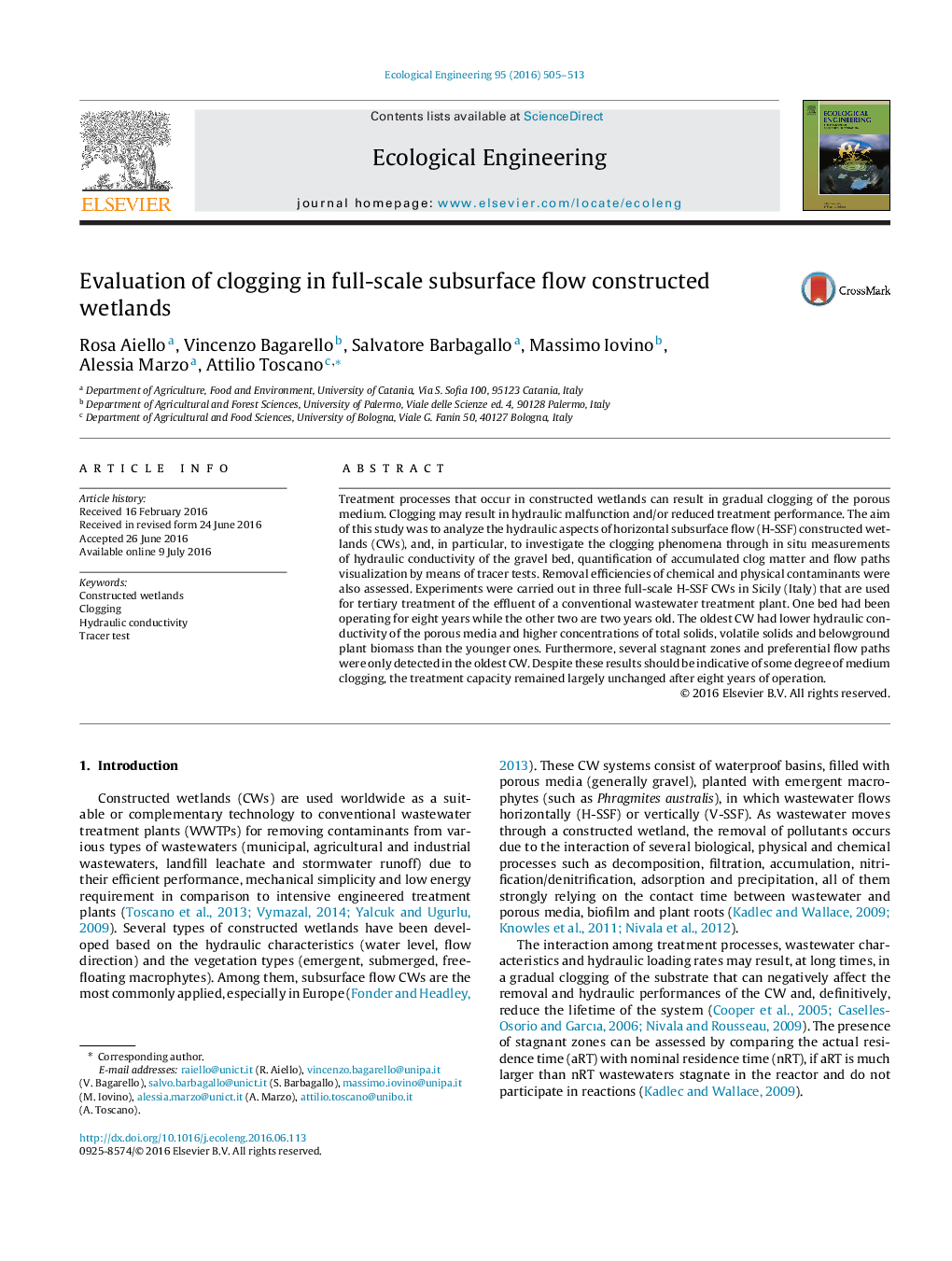| Article ID | Journal | Published Year | Pages | File Type |
|---|---|---|---|---|
| 4388478 | Ecological Engineering | 2016 | 9 Pages |
Treatment processes that occur in constructed wetlands can result in gradual clogging of the porous medium. Clogging may result in hydraulic malfunction and/or reduced treatment performance. The aim of this study was to analyze the hydraulic aspects of horizontal subsurface flow (H-SSF) constructed wetlands (CWs), and, in particular, to investigate the clogging phenomena through in situ measurements of hydraulic conductivity of the gravel bed, quantification of accumulated clog matter and flow paths visualization by means of tracer tests. Removal efficiencies of chemical and physical contaminants were also assessed. Experiments were carried out in three full-scale H-SSF CWs in Sicily (Italy) that are used for tertiary treatment of the effluent of a conventional wastewater treatment plant. One bed had been operating for eight years while the other two are two years old. The oldest CW had lower hydraulic conductivity of the porous media and higher concentrations of total solids, volatile solids and belowground plant biomass than the younger ones. Furthermore, several stagnant zones and preferential flow paths were only detected in the oldest CW. Despite these results should be indicative of some degree of medium clogging, the treatment capacity remained largely unchanged after eight years of operation.
